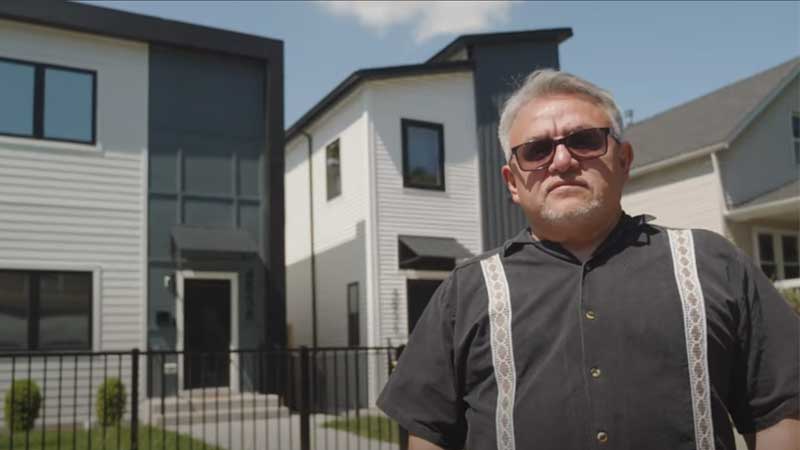Raymundo’s work at TRP has not been easy—or cheap. A $7.2 million philanthropic commitment from JPMorgan Chase has lightened the load, and will aid Raymundo and TRP in building or preserving more than 150 affordable housing residences throughout the Chicago area over the next three years. It will also support new financial education programs and provide lending solutions for both first-time homebuyers and long-term homeowners (second mortgage loans and rehab loans, for example).
That support is a portion of the firm’s $30 billion commitment aimed at dismantling the structural barriers Black, Hispanic, and Latino communities have faced on the road toward building wealth.
For its part, JPMorgan Chase endeavors to solve for “the root cause of inequities, going beyond symptoms and institutionalizing change,” says Joanna Trotter, executive director and senior program officer of global philanthropy at JPMorgan Chase. That’s why, Trotter says, the firm seeks partners that are implementing systems-level change for the communities they serve.
As the leader of an organization that has been active in Pilsen since 1990, JPMorgan Chase trusts and invests in leaders like Raymundo. Trotter calls him “an important truth-teller and innovator,” citing TRP’s longtime leadership in developing and preserving affordable rental housing and homeownership opportunities, creating a community development financial institution (CDFI), and bringing responsive financial products to the community among the efforts that make him a both a valuable strategic partner and a fount of community knowledge.
“We have committed to targeting our investments in a way that benefits Chicago’s South and West side communities,” says Trotter. “But how we do that is informed by local organizations and leaders doing the work.”
Raymundo’s vision helped create growth opportunities for his community. Now developers see Pilsen as fertile ground for profit, prompting increases in property value and cost of living. Since purchasing her home in 1990, TRP homeowner Rosa Perez’s house has doubled in value due to this rapid change.
“Homeownership has historically been one of the most important pathways to wealth building in the United States, but it has not been so easily attainable for Black, Hispanic, and Latino people,” says Trotter. “We must invest in new ways of making homeownership attainable and sustainable for households of color. This helps build a stronger economy for us all.” According to Trotter, some of the more promising solutions include TRP’s work in manufactured housing, as well as its partnership with local government to lower the cost of acquiring and preparing land for high-quality, low-cost homes.
While critical, homeownership is just one part of community reinvestment. The vitality of a community is dependent on the availability of essential amenities: accessible medical care facilities, grocery stores, and community gathering spaces, to name a few.
Learn more about JPMorgan Chase’s commitment to expanding homeownership opportunities in Pilsen and beyond.
See how JPMorgan Chase is helping small businesses thrive in a city just south of Pilsen, Auburn Gresham.
A version of this story originally appeared in Atlantic Re:think, a creative marketing studio.




